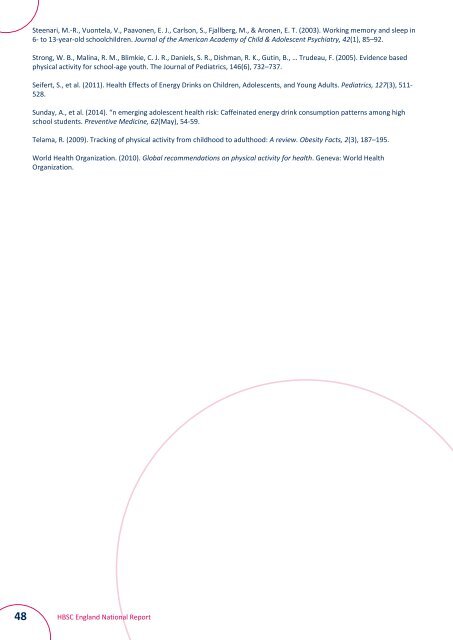health school
1PfRgAZ
1PfRgAZ
Create successful ePaper yourself
Turn your PDF publications into a flip-book with our unique Google optimized e-Paper software.
Steenari, M.-R., Vuontela, V., Paavonen, E. J., Carlson, S., Fjallberg, M., & Aronen, E. T. (2003). Working memory and sleep in<br />
6- to 13-year-old <strong>school</strong>children. Journal of the American Academy of Child & Adolescent Psychiatry, 42(1), 85–92.<br />
Strong, W. B., Malina, R. M., Blimkie, C. J. R., Daniels, S. R., Dishman, R. K., Gutin, B., … Trudeau, F. (2005). Evidence based<br />
physical activity for <strong>school</strong>-age youth. The Journal of Pediatrics, 146(6), 732–737.<br />
Seifert, S., et al. (2011). Health Effects of Energy Drinks on Children, Adolescents, and Young Adults. Pediatrics, 127(3), 511-<br />
528.<br />
Sunday, A., et al. (2014). “n emerging adolescent <strong>health</strong> risk: Caffeinated energy drink consumption patterns among high<br />
<strong>school</strong> students. Preventive Medicine, 62(May), 54-59.<br />
Telama, R. (2009). Tracking of physical activity from childhood to adulthood: A review. Obesity Facts, 2(3), 187–195.<br />
World Health Organization. (2010). Global recommendations on physical activity for <strong>health</strong>. Geneva: World Health<br />
Organization.<br />
48<br />
HBSC England National Report


